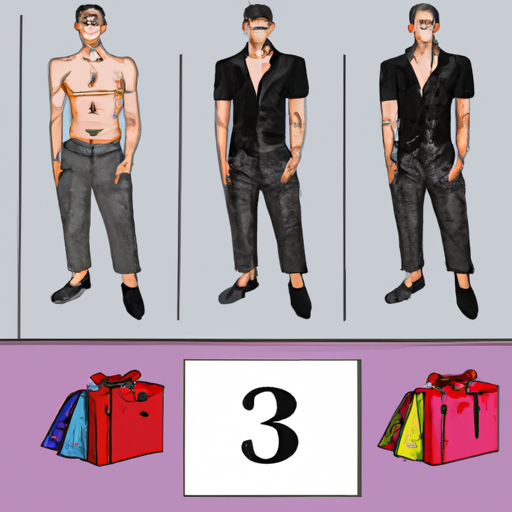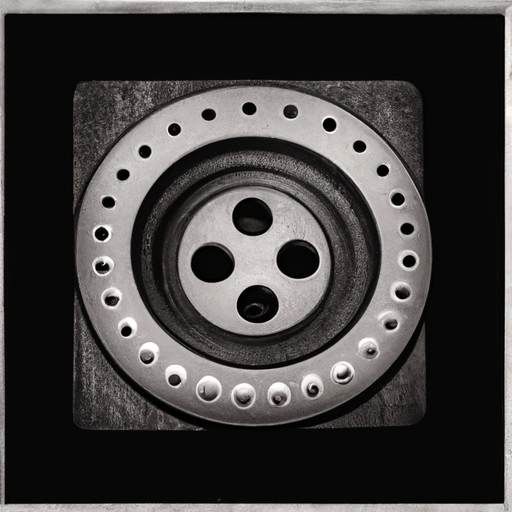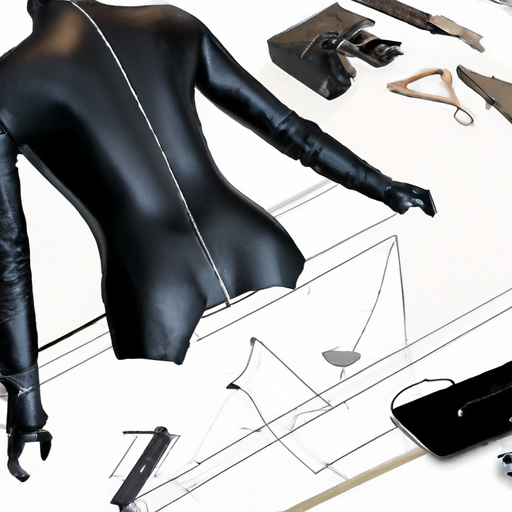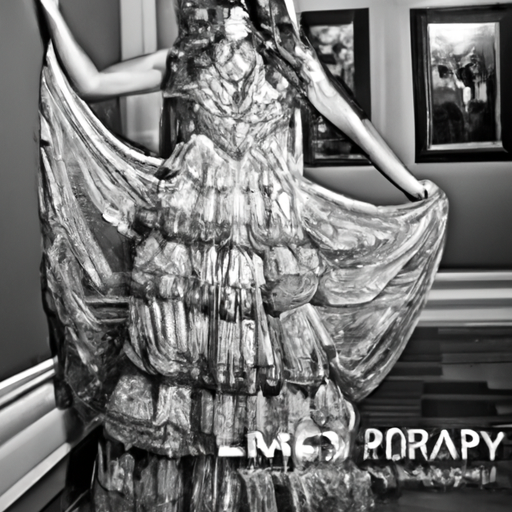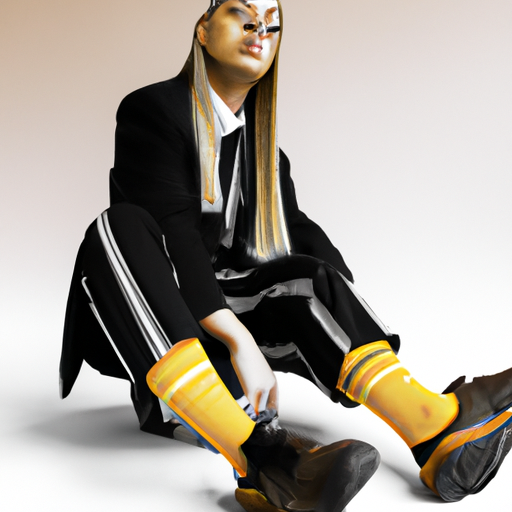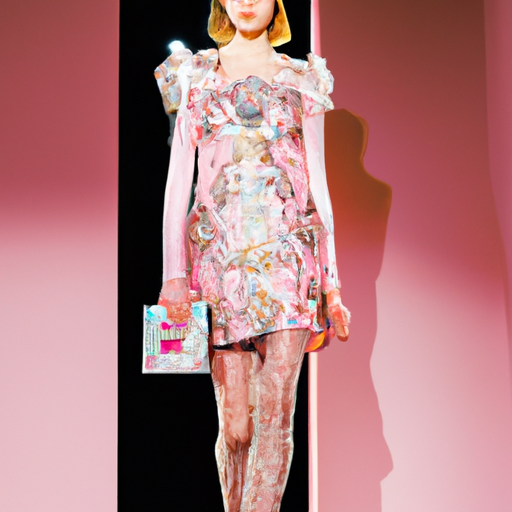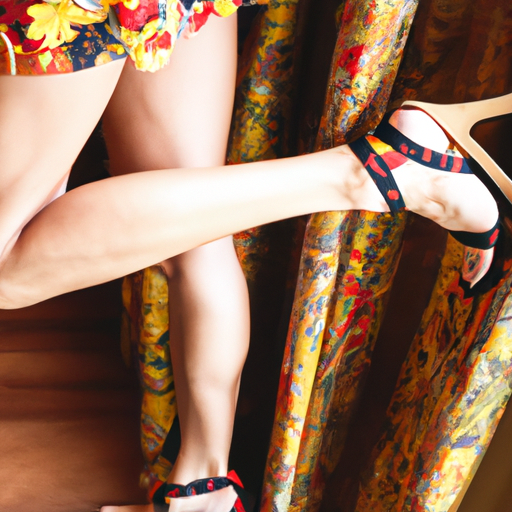70s Men’s Fashion Trends
In the world of fashion, there’s a timeless charm in revisiting past eras, and the 70s is no exception. From vibrant colors to bold patterns, 70s men’s fashion trends have made a resounding comeback in recent years. Think flared jeans that accentuate your every move, paired with retro button-down shirts adorned with funky prints. Don’t forget the ultimate symbol of 70s style – the wide lapel blazer, adding a touch of sophistication to any outfit. Get ready to embrace the groove and discover how the 70s fashion trends can bring a fresh and nostalgic twist to your wardrobe.
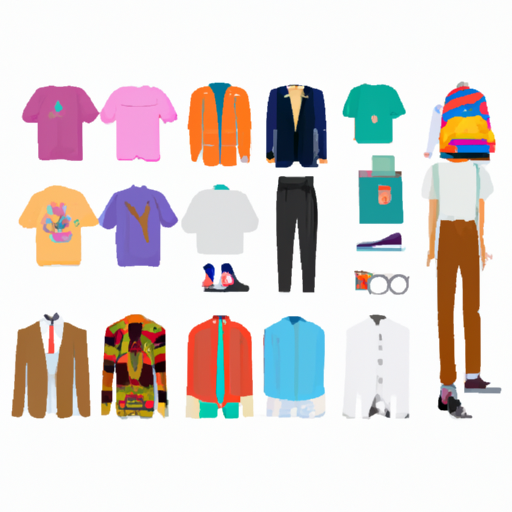
Table of Contents
1. Disco Fashion
Disco fashion was all about making a bold statement on the dancefloor, and one of the most iconic pieces of clothing from this era was the bell-bottom pants. These pants were fitted at the waist and thighs but flared out dramatically from the knee downwards, creating a distinctive silhouette. The exaggerated flare of the bell-bottoms added a touch of flare and movement to your outfit, perfect for grooving to the disco beats.
To complement the bell-bottom pants, platform shoes were a must-have accessory. These shoes had thick soles that added extra height, making a statement as you strutted your stuff on the dancefloor. With their chunky heels and platforms, platform shoes not only added height but also added a touch of glamour to your disco ensemble.
Wide-collared shirts were also a staple of disco fashion. These shirts featured exaggerated pointy collars, often in bright and vibrant colors or funky patterns. The wide collars drew attention to the chest and neck area, making you stand out in a crowd. Paired with bell-bottom pants and platform shoes, wide-collared shirts completed the disco look and added a touch of flamboyance to your outfit.
Another popular choice in disco fashion was polyester suits. Polyester was a synthetic fabric that was lightweight, easy to care for, and had a shiny finish, making it perfect for the disco scene. These suits often came in vibrant colors and featured wide lapels and flared pants, allowing you to rock the disco look with style. Polyester suits were all about embracing bold colors and embracing the energy and vibrancy of the disco era.
2. Hippie Style
The hippie style of the 70s was all about embracing freedom, peace, and love. One of the most recognizable pieces of clothing from this era was the tie-dye shirt. Tie-dye shirts were made by tying or folding the fabric and then applying different colors of dye, creating unique and colorful patterns. These shirts represented the spirit of individuality and self-expression that defined the hippie movement.
Fringed vests were another popular choice among hippie fashion enthusiasts. These vests were typically made of suede or leather and featured long, dangling fringe along the bottom edge. Fringed vests added a touch of bohemian flair to any outfit and were often worn over tie-dye shirts or flowing blouses. They were a symbol of the free-spirited and unconventional nature of the hippie movement.
Flared jeans were a staple of hippie fashion. These jeans were fitted at the waist and thighs but flared out dramatically from the knee downwards. The exaggerated flare added a sense of movement and freedom to your outfit, perfectly embodying the carefree and laid-back attitude of the hippie era. Paired with a tie-dye shirt and fringed vest, flared jeans completed the retro hippie look.
No hippie outfit was complete without peace sign accessories. Peace signs were a powerful symbol of the peace and love movement, and wearing them as accessories was a way of expressing your commitment to these core values. Peace sign necklaces, bracelets, and earrings were often made of colorful beads or metals and became a must-have accessory for anyone embracing the hippie style.
3. Leisure Suits
Leisure suits were a popular choice for men in the 70s looking for a comfortable and stylish outfit. These suits were designed to be worn casually and were made of lightweight and breathable fabrics, often polyester. One of the defining features of leisure suits was the matching jacket and pants set. The jacket and pants were often made of the same fabric and color, creating a cohesive and put-together look.
Bold colors and patterns were another characteristic of leisure suits. Men embraced vibrant shades of blues, greens, and oranges, as well as bold patterns such as plaids and stripes. These eye-catching colors and patterns added a touch of fun and personality to the leisure suit, making it a statement piece.
Polyester fabrics were the go-to choice for leisure suits. Polyester was known for its wrinkle-resistant properties and easy care, making it perfect for the busy and active lifestyles of the 70s. Polyester leisure suits allowed men to look polished and stylish with minimal effort, making them a popular choice for both casual and semi-formal occasions.
Wide lapels were a distinctive feature of leisure suits. Lapels are the folded flaps of cloth on the front of a jacket, and in the 70s, they were exaggeratedly wide. Large lapels were a fashion statement that added a touch of sophistication and style to the leisure suit. The wide lapels drew attention to the chest area and added a visual interest to the outfit.
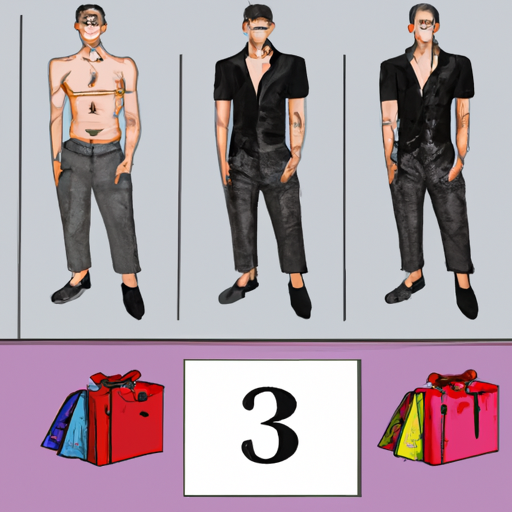
4. Safari-Inspired Clothing
Embracing the adventurous spirit of the time, safari-inspired clothing became a popular trend in the 70s. Earth-toned colors were a defining characteristic of this style. Colors such as khaki, olive green, and sandy brown were often used to create the rugged and natural look associated with exploring the great outdoors.
Utility pockets were a practical and stylish addition to safari-inspired clothing. Jackets and pants were often adorned with multiple pockets, providing ample space to carry necessities while out in the wild. These pockets were not only functional but also added a utilitarian aesthetic to the outfit, further enhancing the safari vibe.
Safari jackets were a key component of this style. These jackets were typically made of sturdy and durable fabric, such as cotton or canvas, and featured a button-up front and belted waist. The design of safari jackets was inspired by the clothing worn by explorers and adventurers, and they often had a rugged and masculine appeal.
Cargo pants were another staple of safari-inspired fashion. These pants were designed with large and spacious pockets on the sides, perfect for storing essential items while on the go. Cargo pants were often made of breathable and lightweight fabrics, making them comfortable and practical for outdoor activities. Paired with a safari jacket and earth-toned accessories, cargo pants completed the safari look.
5. Preppy Fashion
Preppy fashion was all about embracing a clean and polished look with a touch of sophistication. Polo shirts were a popular choice for men looking to achieve this style. These shirts featured a soft collar, a button-up placket, and were made of cotton or a blend of cotton and synthetic fabrics. Polo shirts exuded a sense of class and elegance and were often worn in vibrant colors such as light blue, pink, or yellow.
Another preppy fashion staple was the sweater tied around the shoulders. This trend involved draping a lightweight sweater over your shoulders, creating a preppy and sophisticated look. The sweater was often tied in a loose knot to keep it in place. This accessory added a touch of refinement to your outfit and was a classic look for those wanting to exude preppy style.
Turtlenecks were also a popular choice in preppy fashion. These high-necked sweaters were made of wool or other warm materials and added a touch of sophistication to any outfit. Turtlenecks were often worn in neutral colors such as black, gray, or navy, and were paired with blazers, khaki pants, or even suits. The turtleneck was a versatile piece that could be dressed up or down, making it a must-have for the preppy wardrobe.
Khaki pants were the go-to choice for preppy fashion enthusiasts. These pants were made of a lightweight and durable fabric that had a slightly earthy tone. Khaki pants were often tailored and had a slim fit, giving a polished and put-together look. Paired with a polo shirt, sweater tied around the shoulders, or a turtleneck, khaki pants completed the preppy ensemble.
6. Punk Rock Style
The punk rock style of the 70s was all about rebellion and individuality, and leather jackets were a staple in this subculture. Leather jackets exuded a sense of edginess and rebelliousness that perfectly embodied the punk rock spirit. These jackets were often adorned with studs, chains, and patches, adding extra flair and personality to the outfit. Leather jackets were typically black, but other bold colors such as red or green were also embraced by punk rockers.
Band t-shirts were another iconic element of punk rock fashion. These t-shirts often featured the logo or artwork of punk rock bands, allowing you to proudly display your musical preferences and allegiance to the punk rock subculture. Band t-shirts were typically paired with ripped jeans or leather pants, creating a grungy and rebellious look.
Ripped jeans were a trademark of punk rock fashion. These jeans were intentionally torn or shredded, giving them a worn and distressed appearance. The rips and tears added a touch of rebellion and nonconformity to the outfit. Ripped jeans were often paired with band t-shirts, leather jackets, and studded accessories, creating a punk rock look that was both edgy and unconventional.
Studded accessories were an essential part of punk rock fashion. These accessories included belts, wristbands, necklaces, and even shoes adorned with metal studs. Studded accessories were a way to add a bold and rebellious touch to your outfit and create a sense of unity with the punk rock community. They were often made of leather or other tough materials, further emphasizing the rugged and edgy aesthetic.
7. Denim Everything
Denim was a versatile fabric that dominated men’s fashion in the 70s, and it was seen in various forms, from jackets to shirts to pants. Denim jackets were a popular choice for those wanting to embrace the casual and rugged look. These jackets were typically made of sturdy denim fabric and featured a button-up front, chest pockets, and a slightly boxy silhouette. Denim jackets added a touch of coolness and effortless style to any outfit.
Denim shirts were another go-to choice for men in the 70s. These shirts were made of lightweight denim fabric and often featured a button-up front, a collar, and chest pockets. Denim shirts were versatile and could be worn casually or dressed up for a more polished look. They could be paired with jeans, khaki pants, or even layered under a blazer for a more sophisticated style.
Denim bell-bottoms were a popular choice for men looking to embrace the groovy and free-spirited fashion of the 70s. These pants had a fitted waist and thighs but flared out dramatically from the knee downwards, creating a bold and distinctive look. Denim bell-bottoms were often paired with platform shoes and wide-collared shirts, taking inspiration from the disco fashion of the time. They were a statement piece that allowed you to showcase your sense of style and individuality.
Double denim, also known as the Canadian tuxedo, was a daring fashion choice that involved wearing denim on denim. This trend involved pairing a denim jacket or shirt with denim pants of a different wash or hue. Double denim was a bold statement that embraced the casual and rugged aesthetic of the 70s. When done right, double denim could create a cohesive and stylish look, but it required a careful balance of colors and textures to avoid looking overwhelming.
8. Lounge Wear
Comfort and relaxation were key ideals of the 70s, and velour tracksuits became a popular choice for men looking to embrace a leisurely and laid-back style. Velour tracksuits were made of a soft velour fabric that was both comfortable and stylish. They often consisted of a matching jacket and pants and were available in a variety of colors, allowing you to express your personal style.
Fitted t-shirts were a must-have item to complete your lounge wear look. These t-shirts were made of soft and stretchy fabrics and offered a more tailored and polished fit compared to regular t-shirts. Fitted t-shirts came in various colors and were often worn with lounge wear pants or shorts for a relaxed and casual outfit.
Track jackets were another popular choice for lounge wear. These jackets were typically made of a lightweight fabric such as nylon or polyester and featured a zip-up front and a high collar. Track jackets were designed for comfort and ease of movement, making them ideal for lounging around or engaging in light physical activities. They often featured stripes or color-blocking, adding a touch of sporty style to your lounge wear ensemble.
Sweatpants were an essential component of lounge wear. These pants were made of soft and cozy fabrics such as cotton or fleece and featured an elastic waistband and cuffs at the ankles. Sweatpants were loose-fitting and allowed for freedom of movement, making them perfect for lounging, exercising, or running errands. They often came in solid colors or with simple patterns, making them versatile and easy to pair with other lounge wear pieces.
9. Faux Fur
Faux fur became a popular fashion trend in the 70s, allowing men to embrace a luxurious and glamorous look without harming animals. Men’s fashion embraced the opulence of fur through various pieces of clothing. Fur coats were a statement piece that added warmth and style to any outfit. They were typically made of synthetic materials that mimicked the look and feel of real fur, allowing you to showcase your sense of fashion while staying cruelty-free.
Fur-trimmed collars were a popular accessory that added a touch of elegance to jackets and coats. These collars were made of faux fur and were often detachable, allowing you to customize your outerwear. Fur-trimmed collars added a luxurious detail to your outfit and helped to keep your neck warm during the colder months.
Fur hats were a fashionable choice in the 70s, offering both style and functionality. These hats were made of faux fur and came in various styles, including the classic trapper hat or the stylish fedora. Fur hats added a touch of sophistication to any outfit and kept your head warm during the winter months.
Fur scarves were a versatile accessory that added a touch of luxury to any outfit. These scarves were made of faux fur and could be worn around the neck or draped over the shoulders. Fur scarves were not only fashionable but also provided additional warmth, making them a practical accessory during the colder seasons.
10. Mod Fashion
The mod fashion movement of the 70s embraced a clean, minimalist, and modern aesthetic. It was all about sleek lines, bold patterns, and a youthful and energetic vibe. One of the defining characteristics of mod fashion was the mini skirts for men. These skirts were typically above the knee and were often made of bold patterns such as checks or geometric designs. Mini skirts for men challenged traditional gender norms and allowed individuals to express their sense of style and self-expression.
Slim-fitting suits were a staple of mod fashion. These suits were tailored to be form-fitting and often featured narrow lapels and a shorter jacket length. Slim-fitting suits exuded a sense of sleekness and sophistication and were often worn in solid colors such as black or gray. Paired with a crisp white shirt and a skinny tie, slim-fitting suits completed the mod look.
Geometric patterns were a key element of mod fashion. These patterns were often bold and graphic, featuring shapes such as squares, circles, or abstract designs. Geometric patterns were embraced in various pieces of clothing, including shirts, jackets, and even accessories. They added a playful and artistic touch to the mod wardrobe, allowing individuals to showcase their love for contemporary design.
Go-go boots were an iconic footwear choice associated with mod fashion. These boots were typically made of patent leather and had a sleek, knee-high design. Go-go boots featured a low heel or a flat sole, making them comfortable for dancing or walking. They were often worn with mini skirts or slim-fitting pants, adding a touch of retro flair and completing the mod ensemble.
